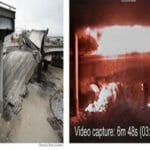4.8
- Webinar No: WBNR 1171
- PDH Units: 3
No data found for Custom Course Number
No data found for Custom Course Units
Intended Audience: Civil & Structure Engineers
Credits: 3 PDH Units
When: Wednesday 11/16, 2 - 5 pm ET
Unique Webinar offered by top experts on Structural Commissioning.
After the recent collapse of the Champlain Tower South in Miami, Florida in 2021, there has been a change of the legal framework associated with inspections of buildings both on the state and federal level. This presentation concerns the implications of these changes and the process of complying with the new requirements. Visual inspection is enhanced by making measurements in a way that removes uncertainty by visual inspections in which many parts of a structure are hidden from view. These measurements are made using non-destructive methods, many of which are familiar. However, the use of the term ‘structural integrity’ extends to the checking of the holistic performance of entire structures. This approach was foreseen in the publication in 1989 by NIST (NISTIR 89/4153) as well as the standard for inspecting existing buildings, SEI-ASCE 11/99 which includes in-situ load testing. In the days of the ASCE publication in-situ load tests were expensive and took considerable time to perform. For this reason, most in-situ tests have been performed on individual elements of a structure or by the research community. In fact, a database of over 1000 measured structures is available to the public. However, it is now possible to measure the holistic performance of a structure quickly and cheaply, using structural dynamics and the process of structural commissioning. This presentation examines the background to the current state of building inspection, the meaning of structural integrity, and the methodology and equipment necessary for a quick check on the integrity of a building. The presentation will consider three levels of structural integrity (human comfort, degradation in the ‘linear elastic’ zone and collapse avoidance). Additionally, this presentation considers practical studies of several full-scale structures that have undergone damage caused by wind and earthquake forces, and considers the methodology for assessing their integrity in comparison.Dr. Alan P Jeary AO, DSc(Eng), PhD, FRSN, FIStructE, FAIB, FIEAust, FRMetS
and subject area expert Mr. Thomas Winant PE
CTO and CEO of STRAAM Group respectively
Date: Wednesday November 16. 2 - 5 pm ET Credits: 3 PDH Units
Course Agenda- Non-destructive tests on structures
- The new legal framework and the Champlain Tower South collapse
- Standard of care for building inspectors
- History of structural performance.
- Natural movement of structures (Newton’s 2nd law)
- Input/response characteristics (statics to dynamics)
- Performance of structures
- The concept of structural risk (40 years after NBS blueprint)
- Definition of ‘a healthy structure’.
- Damage assessment and failure modes
- The use of a Baseline Dynamic Signature
- Perspective of design, performance and its measurement
- Real-life examples from full-scale projects
- Recent new information and research needs
Learning Objectives
At the successful conclusion of this course, you’ll be able to identify and discuss:- Understand the new legal framework
- Understand the new standard of care requirements
- Understand the concept of structural integrity
- Understand the basic outline of the dynamic performance of structures
- Understand the application of system theory to structures
- Understand the history of performance assessment of structures
- Understand the assessment of the health of a structure through analysis of dynamic behavior
- Appreciate the use of archived baselines for the quick assessment of structures after an event
- Appreciate the value of information obtained from low amplitude structural vibrations
- Appreciate the power of determining a ‘risk ratio’ for a structure
- Understanding that a ‘risk ratio’ compares the current state of a structure with that envisaged by codification.
Special Webinar Instructions
After payment, please visit this webinar page, click “Start Course” and fill out the Webinar Registration Form. You’ll receive email notification and details on how to join the webinar. You will then be able to access the webinar slides, test your system and receive webinar reminders. After completing the webinar requirements, your certificate of completion will be saved and available for download in your profile. We value your feedback! Please rate this webinar after completion.Group Discounts Available
Course Reviews
4.8
4.8
4 ratings - 5 stars0
- 4 stars0
- 3 stars0
- 2 stars0
- 1 stars0
No Reviews found for this course.
Once completed, your order and certificate of completion will be available in your profile when you’re logged in to the site.
Ethics Courses
Webinar No: WBNR 1171
PDH Units: 3










